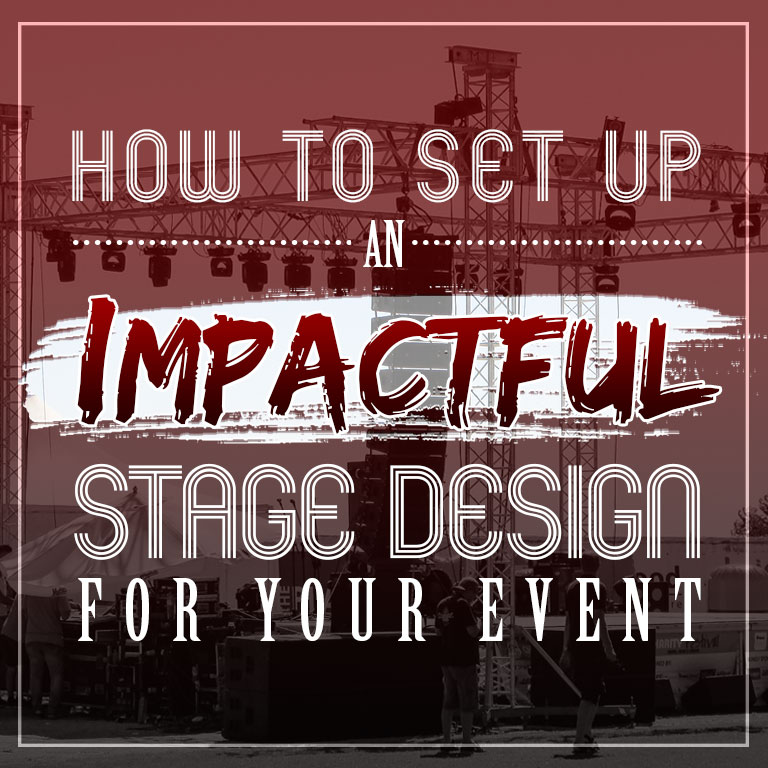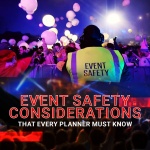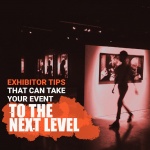
Stage design plays half the role in achieving success in your event. Because it takes the event’s center of attention, it must be attractive and functional enough to achieve the event’s goal. A beautiful and functional stage design is key to leaving an impact in your audience.
Good to know, achieving this is simple and easy. A winning stage design is actually not elaborate and intricate. The idea behind every impactful stage design is, “Less is more.” Follow these simple and practical tips for your next successful event.
Stage design plays half the role in creating a remarkable event and it is a challenge to ensure that it will leave a considerable impact among attendees.
While the stage must be functional to achieve the goal of the event, visual impact must also be given due consideration to get a positive audience response. Good to know, achieving this is simple and easy.
A winning stage design is actually not elaborate and intricate–there’s more to it than just complexity. In fact, the idea behind every impactful stage design is, “Less is more.”
To ensure that you will be on the right track of setting up an impactful stage design for your event, here are simple and practical tips that you can follow.
1. Keep it Focused and Simple
Remember that stage designs should be functional enough to draw the attention to the focus of your event, be it a speaker, solo artist or band. To do this, try to achieve the balance between beautifying the stage while keeping it low key to focus the audience’s attention. The stage should not be too elaborate that distracts the audience, or too simplistic that looks unappealing in camera.
Stage designs should be functional enough to draw the attention to the main focus of your event, be it a speaker, solo artist or band. To do this, try to achieve the balance between beautifying the stage while keeping it low key. The stage should not be too elaborate to distract the audience, or too underwhelming that it will look unappealing on camera.
On this premise, you must identify your focus. If you are presenting a solo artist, you must put the emphasis on him. If the focus is the speaker, s/he must be the center of attention and not the stage technologies or props you have all around the stage. When designing a stage, remember that it should strategically add beauty and emphasis in your event.
On this premise, you must identify your focus. If you are presenting a solo artist, you must put the emphasis on him. If the focus is the speaker, s/he must be the center of attention and not the stage technologies or props you have all around the stage.
Remember that when it comes to stage design, aesthetics matter but it should not be too overwhelming to lose focus on where it matters most.
2. Know How Much Space You Need
After you identify your focus, the next thing to do is to proportion the size of the stage. There are two things you want to achieve in designing your stage: the size proportion to your focus and the audience’s line of sight. The stage size and height are important both aesthetically and functionally.
Proportion. If you’re presenting a solo artist, an enormous stage will definitely dwarf the artist. On the other hand, a full band on a petite stage will look squeezed and jam.
Line of Sight. You must ensure that the audiences have a full view of the stage from all seating locations.
3. Be Conscious of the Stage Layout
Always allow easy access to the stage. To do this, it is important to know how the performers or speakers would want to use the stage. Do they want to go to the audience for interaction? Are there surprise guests who need a backstage access? Do the audience need to come up the stage? Easy access saves time and often avoids dead-air situations. Hence, it is important to carefully consider the layout of your stage: identifying the stairs location, doors, backdrops, props and access points.
Always allow easy access on the stage. To do this, it is important to know how the performers or speakers would want to use the stage. Here are some points to consider:
- Do they want to go to the audience for interaction?
- Are there surprise guests who need backstage access?
- Do the audience need to come up the stage?
Easy access saves time and often avoids dead-air situations. Hence, a stage designer must carefully consider the layout of your stage to be able to put enough attention on props and backdrops while identifying the basic access points like the stairs and doors.
4. Secure Enough and Proper Lighting.
“Stage designs are 75% lighting,” said Chess Hoyle, production designer at Forest Hill Church. Good lighting can literally control the mood of your stage design and add emphasis on the subject. As such it is important to use proper lighting for backdrop and effects if you want to add mood. And importantly, you should provide good lighting to emphasize the speaker or performer. This, along with the materials on the stage should work in concert to keep the performers or speakers on focus.
According to Chess Hoyle, production designer at Forest Hill Church, “Stage designs are 75% lighting“. Good lighting can literally control the mood that you want to set on stage while putting emphasis on the subject.
As such, it is important to use proper lighting for backdrop and effects. It will also be important to provide good lighting that harmoniously works with other stage design equipment to put the focus on the speaker or performer.
IMPORTANT: Installing lighting equipment needs durable rig or trusses to hold the fixtures in place. Good to know, trusses can be customized according to your design. Learn more about stage and trusses here.
5. Make Sure the Stage Technologies are in Sync
There could never be more embarrassing in stage management or production design than having prop flops and stage tech failures. This is especially true for concerts and presentations that need all the props and stage fixtures in sync.
Stage managers should be wary about the curtain call when to dim or spot the lights, control the IMAG, display the projector and other stage fixtures or props. Keeping everything in sync with the order of performance or presentation is what you want to have a smooth flowing and remarkable event.
Do you find this article helpful? Share us your thoughts by commenting below.





